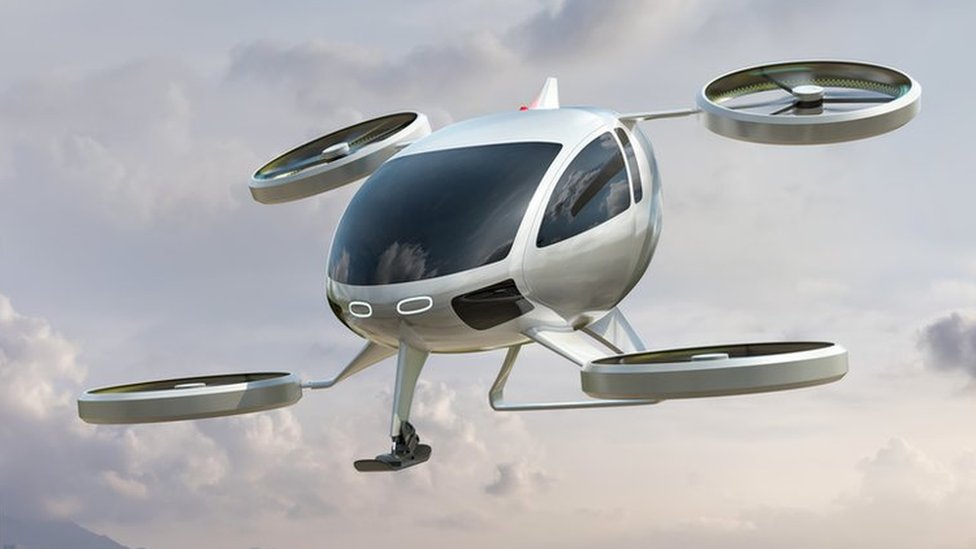In recent years, the aviation industry has experienced a tech-driven renaissance. Innovations once confined to science fiction—like autonomous planes and passenger drones—are now taking shape in real-world applications. As SwiftPass Global Immigration continues guiding clients through international travel and immigration, understanding these changes is crucial. So, what does the future of air travel look like with drones and autonomous aircraft in the skies?

The Rise of Autonomous Aircraft
Autonomous aircraft—planes capable of flying without human pilots—are being developed by both traditional aviation companies and tech startups. According to a report by Deloitte Insights, autonomous flight technologies are advancing due to improvements in artificial intelligence (AI), machine learning, and sensor systems.
Major players like Airbus, Boeing, and Xwing are testing autonomous commercial aircraft. For instance, Xwing’s autonomous cargo planes have already completed fully unmanned gate-to-gate flights in controlled airspace. These tests signal that autonomous flight for passengers could be closer than we think.
Benefits of Autonomous Planes
1. Increased Safety: AI can eliminate human error, which causes 70-80% of aviation accidents.
2. Cost Efficiency: Removing or reducing crew lowers airline operating costs.
3. Enhanced Scheduling: Planes could fly 24/7 without crew fatigue issues.
4. Optimized Fuel Use: AI can fine-tune flight paths in real time for better fuel efficiency.
Passenger Drones: A New Mode of Urban Mobility
Imagine hopping into a drone instead of a taxi for your morning commute. That’s the vision behind Urban Air Mobility (UAM)—a sector forecasted to be worth over $1 trillion by 2040. Companies like Joby Aviation, Volocopter, and EHang are developing electric vertical takeoff and landing (eVTOL) drones designed to carry passengers over short distances. Dubai, Paris, and Los Angeles are among the cities preparing to roll out drone taxis within the next 5 years.

Advantages of Passenger Drones
1. Reduced Urban Congestion: Drones can bypass ground traffic entirely.
2. Eco-Friendly Travel: Most eVTOLs are electric, emitting zero carbon during flight.
3. Shorter Trip Times: A 60-minute drive could become a 10-minute aerial hop.
Challenges to Overcome
While the technology is promising, several hurdles remain before drones and autonomous planes become mainstream.
Regulatory Uncertainty
Aviation regulations are still catching up. Organizations like the Federal Aviation Administration (FAA) and European Union Aviation Safety Agency (EASA) are working to create frameworks that ensure autonomous flight safety without stifling innovation.
Public Trust and Safety
A 2022 Ipsos poll found that 54% of global respondents were hesitant about flying in an autonomous aircraft, citing safety concerns. Developers must build trust through transparency, robust testing, and safety records.
Infrastructure Limitations
Passenger drones require “vertiports” for takeoff and landing. Urban planning must accommodate these hubs, which will take time and investment.
What This Means for International Travelers
At SwiftPass Global Immigration, we believe the evolution of air travel could reshape how people cross borders:
1. Faster Visa Processing: With point-to-point air mobility, immigration hubs could decentralize, easing congestion in major airports.
2. New Routes and Markets: Autonomous planes may allow direct flights between smaller cities, expanding global connectivity.
3. Borderless Skies: As international policies adjust, flying by drone or pilotless aircraft could become a new norm for regional and even intercontinental travel.
Looking Ahead: What Can Travelers Expect?
| Technology | Projected Impact by 2035 |
|---|---|
| Autonomous Commercial Flights | Regional passenger services in limited airspaces |
| Passenger Drone Taxis | Operational in 20+ cities for urban travel |
| AI-Controlled Air Traffic | Real-time optimization of flight paths and airport flow |
To stay ahead, travelers should monitor:
1. Tech-friendly visa policies
2. Drone transport regulations by country
3. Airport readiness for autonomous travel
Conclusion
Autonomous planes and passenger drones are no longer distant dreams—they are shaping the next era of air travel. As regulations evolve and public confidence grows, flying could become more efficient, inclusive, and sustainable. At SwiftPass Global Immigration, we’re not just keeping pace with these innovations—we’re preparing our clients for a future that’s airborne. Whether you’re relocating, studying abroad, or investing in a new country, we ensure you’re ready for the future of travel.